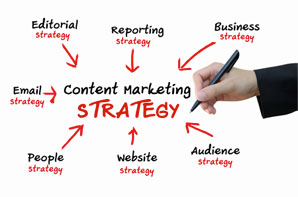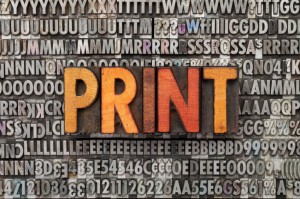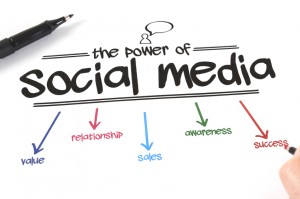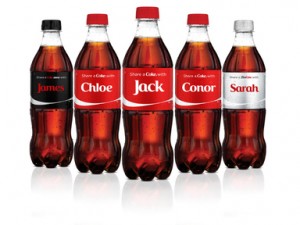I know, I know.
This post is late by my standards and should have been published back on the 29th December. No I haven’t been caught dog napping.
But without boring you with the details, I’ve decided to post now, better late than never.
As has been customary for the last two years my final post of the year has always been an overview or resource tool for you or the ‘best of’ what I’ve written during the year.
By the best of I mean the posts I’ve enjoyed writing and more importantly generated feedback and good responses. But above all else I hope it provides a useful ‘go to’ for future reference.
So how did 2014 start?
It seems so long ago now doesn’t it but January came in with a flourish and I talked about the importance of document security and how to manage information especially when you are on the move.
With the use of tablets and smartphones it is so much easier to read, respond and write on the move.
But how careful do you need to be?
February and March as is customary in our business focussed on P60’s every payroll department’s worse nightmare and a cumbersome task that still needs to be managed. But outsourcing the process can save time and money. Here’s how.
 And then there was no stopping me I was off onto the importance of content personalisation and customisation in just about every working document from payslips to marketing content.
And then there was no stopping me I was off onto the importance of content personalisation and customisation in just about every working document from payslips to marketing content.
Why? Simple. Because content personalisation has everything to do with print and the physical world as it has in the digital and social world.
 Content personalisation is key for any direct mail or content marketing piece.
Content personalisation is key for any direct mail or content marketing piece.
Take a look at your payslip, an invoice, social media messages.
The whole point is to make your message personalised whether it’s a message for an employee or for a customer, make it personalised and relevant and get the the message across in the right way.
March covered hybrid mail – a great way to mail out a few to several thousand letters at less than the cost of a 2nd class stamp and a service which more and more people are climbing on board because there’s no set up costs and no on-going charges. Best of all you can do it all from your desktop.
It was also the time when ‘big data’ was being talked about.
It seems like an enigma but it reality it’s simply a case of having loads of complex data sets but not understanding what to do with it.
That will be the challenge certainly for the bigger organisations in 2015.
April was the month where I really drove home the view of why print needs to be part of your content media and marketing strategy and leveraging the power of print.
Why should print be part of the cross media marketing mix when it comes to marketers planning a re-brand or delivering an important message?
May continued the theme of cross media marketing and suggested ways that a print management company can help you with planning your cross media marketing strategy.
Part of that is understanding what your customer really wants.
 At the start of June I was surprised at just how many of us didn’t know what BYOD meant and how many of us are now working on our own devices at work.
At the start of June I was surprised at just how many of us didn’t know what BYOD meant and how many of us are now working on our own devices at work.
This has a number of ramifications for businesses not least security but how do you legislate how employees use their own devices in the workplace.
I had a lot of fun with this blog post and it really did happen to me. How easy it is for personalisation to go horribly wrong.
What does your content marketing say about you?
 How do we engage with customers when there are so many social media platforms and moreover where do we find our audience?
How do we engage with customers when there are so many social media platforms and moreover where do we find our audience?
Having achieved that how do you then get your message read or heard?
I’m regularly asked, Caroline, how can we save money on our print, not just the customary business print but the processing of print like printing and mailing invoices, statements, customer letters, so I wrote a post about it.
The ice bucket challenge was a worldwide phenomenon in August, just about everyone rose to the challenge and had a bucket of ice cold water thrown over them, I was one of them.
Why did it go viral and what did the ice bucket challenge have in common with content marketing?
 It’s social and online which is why it went viral and the challenge for marketers is understanding how multi-channel marketing matters in a digital world and how to be successful at delivering it time and time again.
It’s social and online which is why it went viral and the challenge for marketers is understanding how multi-channel marketing matters in a digital world and how to be successful at delivering it time and time again.
One of my favourite posts was written in November where I talked about going digital completely and giving up the use or need for paper.
People talk about the demise of print and paper but I believe whilst it’s need has changed it still forms an important part of any marketing campaign if used intelligently with QR codes and augmented reality.
My last blog post in December argued the case for businesses needing social media.
Since writing that article I’ve read at least three that have argued the demise of social media, or rather we’ve become fatigued by it.
That it has probably gone as far as it can go and millenials want more instantaneous ways of receiving their content with instant gratification.
What now for 2015?
I’m starting on the NCTJ (national council of training journalists) to develop my career and skills in writing because I enjoy researching and writing on subjects that I’m interested in.
I will continue to do my very best to serve up interesting articles throughout this year and any noteworthy industry news.
Until next time.
Have a very happy new year and thank you for turning up and reading.









